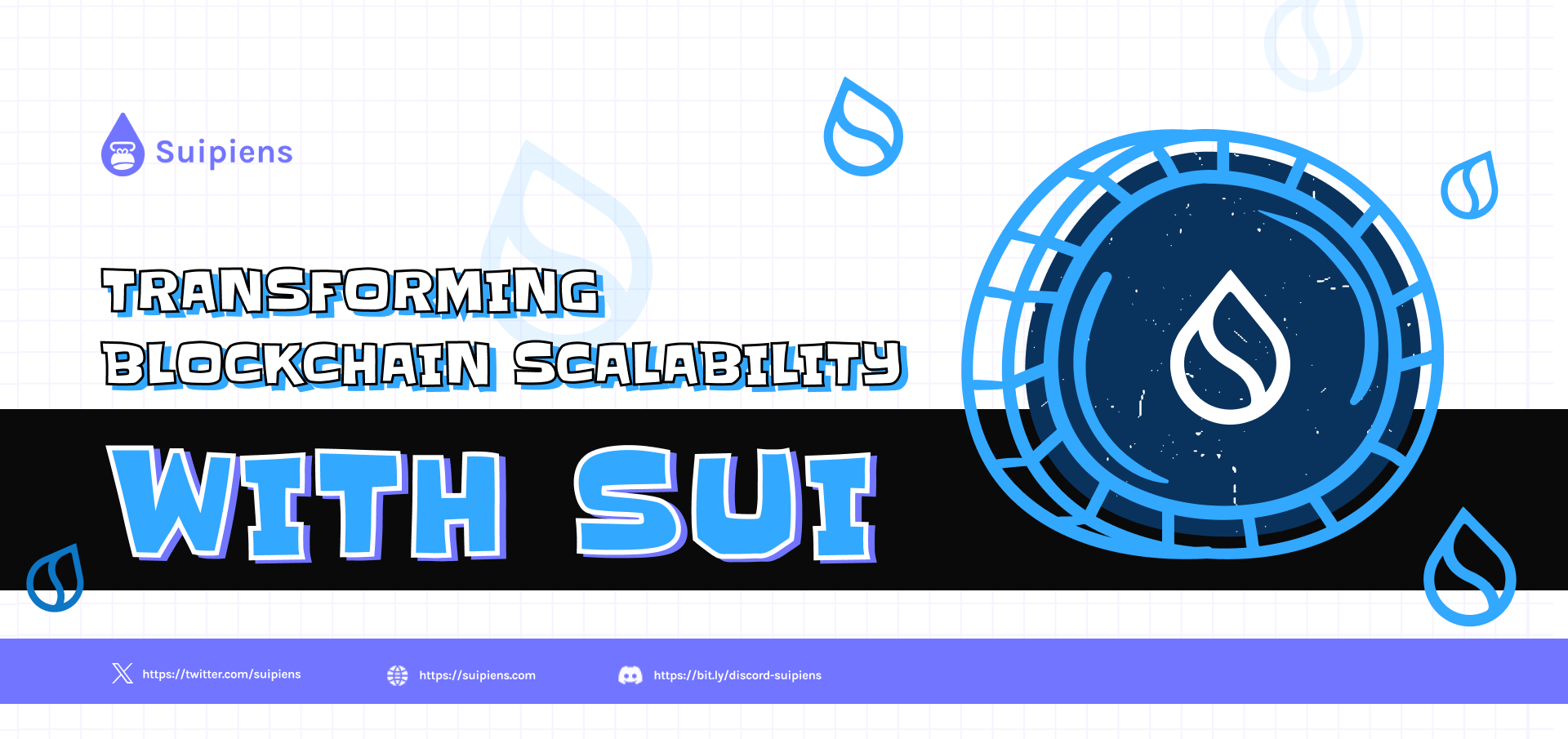Transforming Blockchain Scalability With Sui

Discover the scalability solutions of Sui's blockchain technology. Learn how Sui's approach simplifies complex processes and enhances user experiences.
The L2 Challenge Of Blockchain Scaling
Scaling has always been a key concern in the blockchain world, and Layer 2 (L2) solutions emerged as a response to this issue. However, let's explore the drawbacks of L2s and discover the benefits of a groundbreaking Layer 1 (L1) solution like Sui.
L2s, while promising, come with their own set of challenges for application developers. When an L2 interacts with Ethereum, or any L1 for that matter, a bridging activity becomes necessary. Assets on the L1 must be mirrored on the L2, and vice versa. Furthermore, the L2 must provide a mechanism for L1 to verify all transactions. This bridging process complicates asset transfers, especially for non-fungible assets and complex applications beyond simple tokens.
To develop intricate applications on Ethereum's L2, developers require contracts on both the L1 and L2. These contracts must coordinate asset transfer between the two ecosystems, making the process manual and error-prone. Imagine having assets spread across multiple L2s with custom contracts; each transaction involves bridging back to the L1, creating a cumbersome user experience. This complexity is why L2s have limitations in capturing the imagination of developers.
Cosmos, an interesting ecosystem, took a different approach by using separate blockchains for various applications. However, this approach faces the same challenge of bridging assets every time an application switch occurs, reducing efficiency and user-friendliness.
Sui's Approach: A Unified Database
Sui introduces a novel approach—a unified database containing all replicated state data across validators. Once a transaction is completed, everything remains accessible in the same database, eliminating the need for constant asset transfers and enhancing user experience.
Key Innovations Of Sui Lutris
Sui Lutris, at the core of Sui's protocol, leverages two essential concepts to achieve high throughput and low latency:
- Non-consensus Actions: For actions involving objects solely owned by the user, like NFTs and personal assets, Sui employs a fast path. Users can achieve transaction finality without consensus, ensuring low-latency interactions.
- Consensus Actions: In cases where transactions involve shared objects requiring consensus, like auctions, Sui Lutris enables efficient consensus mechanisms. While this path has higher latency, it accommodates complex operations like those found in DeFi protocols.
Designing Apps for Sui
App developers on Sui have the flexibility to design applications that benefit from the fast path. Smart contract developers can control whether actions involve single-owner objects or shared ones, optimizing user experiences. Actions that demand low latency, such as gaming interactions, can be structured to take full advantage of the fast path.
About Programmable Transaction Blocks: Fast or Consensus?
Programmable Transaction Blocks can operate in either the fast path or the consensus path. They enable efficient batch processing for transactions involving solely owned objects, leading to faster execution. However, when shared objects are involved, the consensus path is utilized, resulting in slightly higher latency.
What Does Sui Have Achieved and What's In Progress?
Sui's mainnet, active for over 100 days, has seen remarkable validation of its design principles. During special promotions, the majority of transactions utilized the fast path, demonstrating its scalability and low-latency benefits. However, users encountered challenges related to the fast path's delicacy, causing objects to lock up temporarily. Developers are actively working on solutions to expedite object unlocks and enhance user experiences.
The Privacy of Sui
Sui adopts a pragmatic approach to privacy, recognizing that privacy requirements vary across applications. It empowers app developers to implement privacy solutions based on their specific needs. Sui offers cryptographic primitives, including Zero Knowledge Proofs, for verifying off-chain actions while preserving privacy. Developers can combine on-chain and off-chain strategies to address their unique privacy concerns.
The Future Of Sui
In the short term, Sui's improvements will align with the needs of its growing app ecosystem. Long-term, over the next 6 to 12 months, Sui aims to enhance its Lutris protocols to achieve even lower latency, scalability, and cost-efficiency. These developments will empower validators to run efficiently on diverse hardware setups, optimizing transaction execution and overall blockchain performance.
Sui's journey continues to shape the blockchain landscape, offering innovative solutions for scalability, privacy, and user experience. As the platform evolves, it invites developers and the community to actively participate in defining its future direction. With a commitment to simplicity and efficiency, Sui aims to revolutionize the blockchain space, one transaction at a time.
Be sure to check out Suipiens' website and social media channels to stay up-to-date on all things about Sui Blockchain!

